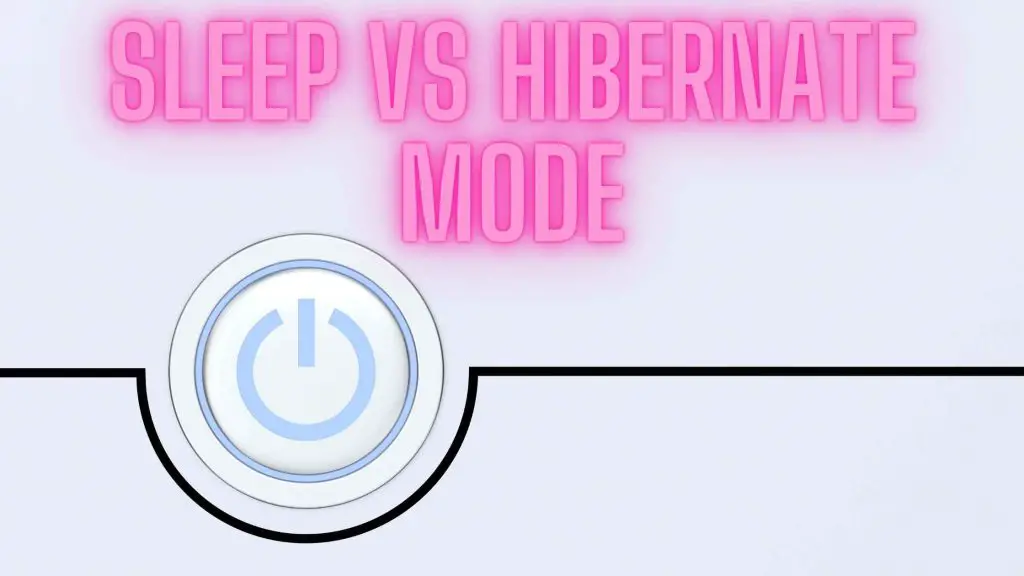

- #HYBRID SLEEP VS HIBERNATE HOW TO#
- #HYBRID SLEEP VS HIBERNATE SOFTWARE#
- #HYBRID SLEEP VS HIBERNATE CODE#
- #HYBRID SLEEP VS HIBERNATE WINDOWS 7#
- #HYBRID SLEEP VS HIBERNATE WINDOWS#
Systemd provides native commands for suspend, hibernate and a hybrid suspend see Power management#Power management for details. To automatically suspend/hibernate on certain power events, such as laptop lid close or battery depletion percentage, you may want to look into running Acpid. Actually hooking them up to power buttons or menu clicks or laptop lid events is usually left to other tools. The goal of these packages is to provide binaries/scripts that can be invoked to perform suspend/hibernate.
#HYBRID SLEEP VS HIBERNATE SOFTWARE#
The uswsusp ('Userspace Software Suspend') tools provide wrappers around the kernel's suspend-to-RAM mechanism, which perform some graphics adapter manipulations from userspace before suspending and after resuming. On modern kernels, writing appropriate strings to /sys/power/state is the primary mechanism to trigger this suspend.
#HYBRID SLEEP VS HIBERNATE CODE#
The most straightforward approach is to directly inform the in-kernel software suspend code (swsusp) to enter a suspended state the exact method and state depends on the level of hardware support. Using low level interfaces directly is significantly faster than using any high level interface, since running all the pre- and post-suspend hooks takes time, but hooks can properly set the hardware clock, restore wireless, etc. Though these interfaces can be used directly, it is advisable to use the high level interfaces to suspend/hibernate. There are multiple low level interfaces (backends) providing basic functionality, and some high level interfaces providing tweaks to handle problematic hardware drivers/kernel modules (e.g. If the battery is depleted, the system can be resumed from disk, which is much slower than resuming from RAM, but the machine's state has not been lost. Therefore, if the battery is not depleted, the system can resume instantly. Saves the machine's state into swap space, but does not power off the machine. Hybrid suspend (aka hybrid sleep) A hybrid of suspending and hibernating, sometimes called suspend to both. Until then, there is zero power consumption. When the machine is powered on, the state is restored. Saves the machine's state into swap space and completely powers off the machine. Suspend to disk (aka hibernate) The S4 sleeping state as defined by ACPI. Because of the large power savings, it is advisable for laptops to automatically enter this mode when the computer is running on batteries and the lid is closed (or the user is inactive for some time). Works by cutting off power to most parts of the machine aside from the RAM, which is required to restore the machine's state. Suspend to RAM (aka suspend, aka sleep) The S3 sleeping state as defined by ACPI.
#HYBRID SLEEP VS HIBERNATE WINDOWS#
Although the target system power state is the same between hybrid shutdown and hibernates (S4), Windows will only explicitly disable WOL when it's a hybrid shutdown transition, and not during a hibernate transition.Tip: While this state is subject to battery drain issues on Windows or macOS since they support waking devices in this state for network activity, the Linux software ecosystem does not currently make use of this feature and should be unaffected. So WOL is supported only from sleep (S3), or when the user explicitly requests to enter hibernate (S4) state in Windows 10.

This behavior removes the possibility of invalid wake-ups when an explicit shutdown is requested. Network adapters are explicitly not armed for WOL in these cases, because users expect zero power consumption and battery drain in the shutdown state. In this scenario, WOL from S4 or S5 is unsupported. In Windows 10, the default shutdown behavior puts the system into the hybrid shutdown (also known as Fast Startup) state (S4). So waking from S5 is possible on some systems if enough residual power is supplied to the network adapter, even though the system is in the S5 state and devices are in D3. However, some network adapters can be left armed for waking if enough residual power is available. WOL from S5 isn't officially supported in Windows 7. And all devices are put into the lowest power state (D3). In Windows 7, the default shutdown operation puts the system into the classic shutdown state (S5).
#HYBRID SLEEP VS HIBERNATE WINDOWS 7#
The default behavior in response to WOL events has changed from Windows 7 to Windows 10. Typically, such an event is a specially constructed Ethernet packet. The Wake on LAN (WOL) feature wakes a computer from a low-power state when a network adapter detects a WOL event.
#HYBRID SLEEP VS HIBERNATE HOW TO#
This article provides information on how to enable Wake on LAN behavior in different versions of Windows.Īpplies to: Windows 10, version 1903, Windows 10, version 1809, Windows 7 Service Pack 1 Original KB number: 2776718 Summary


 0 kommentar(er)
0 kommentar(er)
